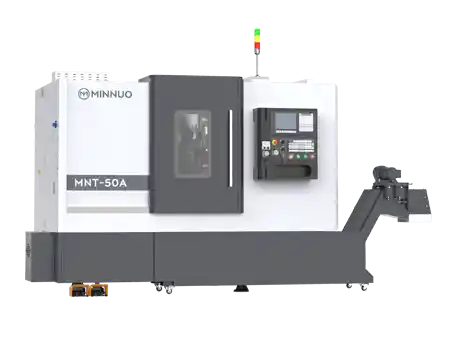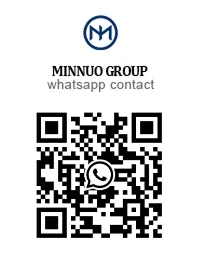CNC Milling Machines: The Ultimate Guide to Process, Types & Buying
CNC milling has revolutionized the way we create parts. It has transformed from a manual, labor-intensive process into a high-precision, automated standard for industries ranging from aerospace to medical devices.
Although the technology is powerful, choosing the right CNC milling machine or service can be overwhelming. With options ranging from 3-axis to 5-axis, vertical to horizontal, and endless tooling variations, how do you ensure you are making the right investment?
In this ultimate guide, we’ll cut through the noise. We will explain exactly how CNC milling works, the different types of machines available, and give you a checklist to choose the right solution for your production needs.
What is a CNC Milling Machine?
While 3D printing (additive manufacturing) gets a lot of hype, CNC (Computer Numerical Control) milling remains the backbone of precision manufacturing. It is a subtractive manufacturing process.
Think of it like a sculptor with a block of stone. The machine uses rapidly rotating cutting tools to remove material from a workpiece to create a finished part. The "CNC" part means that a computer controls the movement of the cutter with incredible accuracy—down to a fraction of a human hair.
With a CNC milling machine, you are building a production line that offers high repeatability, complex geometries, and the ability to work with tough materials like titanium and steel.
Note: Unlike turning (lathes) where the part spins, in milling, the tool spins while the workpiece stays stationary (or moves along specific axes).
How Does the CNC Milling Process Work?
Understanding the workflow helps you optimize your production. It’s not just about pressing a button; it’s a digital-to-physical journey.
Designing the CAD Model: Everything starts with a digital design (CAD). You create a 3D representation of the part you want to make.
Converting to CAM: The design is loaded into CAM (Computer-Aided Manufacturing) software. This software translates the design into G-code—the language the machine understands.
Machine Setup: This is where skilled operators shine. The workpiece is secured to the machine bed using fixtures or vises.
The Machining Operation: The CNC milling machine reads the G-code and executes the cuts. It automatically changes tools (drills, end mills) and adjusts speeds based on the program.
Types of CNC Milling Machines: Which One Do You Need?
Just as you wouldn't use a sledgehammer to hang a picture frame, you need the right machine for your specific parts. The market is filled with variations, but here are the core categories you need to know.
1. Vertical Machining Centers (VMC)
The most common type. The spindle axis is vertically oriented.
Pros: Lower cost, easier to program, great for flat parts.
Cons: Gravity can cause chips (waste metal) to accumulate on the part.
2. Horizontal Machining Centers (HMC)
The spindle is horizontal.
Pros: Gravity helps chips fall away (better surface finish), allows for pallet changers to load parts while the machine is running.
Cons: More expensive and takes up more floor space.
3. The 5-Axis Revolution
Standard machines operate on X, Y, and Z axes. 5-axis CNC milling machines add two rotational axes (A and B).
Why it matters: You can machine complex shapes (like turbine blades) in a single setup. This reduces handling time and increases accuracy.
Common Materials You Can Machine
One of the biggest advantages of CNC milling is versatility. Unlike injection molding which requires expensive molds, you can switch materials instantly.
Metals: Aluminum (lightweight, easy to machine), Stainless Steel (corrosion resistant), Titanium (aerospace grade), and Brass.
Plastics: POM (Delrin), Nylon, PEEK, and Polycarbonate.
Composites: Carbon fiber and fiberglass (requires specialized tooling).
Tip: Your choice of material dictates the "Feeds and Speeds" of the machine. Harder materials require slower speeds and more rigid machines.
Checklist: How to Choose the Right Machine (or Service)
This is a pretty epic guide, and we know the specs can be confusing. Whether you are buying a machine or outsourcing to a CNC shop, use this CNC Selection Checklist to make the right call.
Define your complexity: Do you need simple brackets (3-axis) or complex impellers (5-axis)?
Check the Tolerance: Can the machine hold tight tolerances (e.g., +/- 0.005mm)?
Volume: Are you making a prototype (1 off) or mass production (10,000 off)? HMCs are better for high volume.
Spindle Speed: High-speed spindles are needed for small tools and aluminum; high-torque spindles are needed for steel.
Support & Software: Does the machine integrate easily with your current CAM software?
Boost Your Production with Minnuo
Understanding the theory is one thing; executing it is another.
If you are looking to optimize your manufacturing line, or if you need high-precision parts delivered on time, Mminnuo is here to help. We don't just sell machines/services; we provide solutions.
Why choose us?
Advanced Technology: We utilize the latest 5-axis CNC milling machines to ensure maximum precision.
Expert Support: Our team helps you optimize your G-code and fixture setups to reduce cycle times.
Automation Ready: Our systems are designed to integrate with robotic loaders for 24/7 production.
You can try to figure out the complexities of tooling and axis limits yourself, but partnering with MINNUO makes the process much more manageable.
Conclusion on CNC Milling
CNC milling machines are the engines of modern industry. They offer a balance of speed, precision, and versatility that is hard to beat.
However, the technology is deep. From selecting the right cutter to programming complex 5-axis paths, there is a lot to consider. By focusing on the basics of machine types and material properties, you can build a manufacturing process that is efficient and profitable.
Ready to upgrade your manufacturing capabilities?
Check out our latest catalog of CNC solutions or contact our engineering team for a free consultation.




 Email
Email sales1: +86 13295238763
sales1: +86 13295238763

